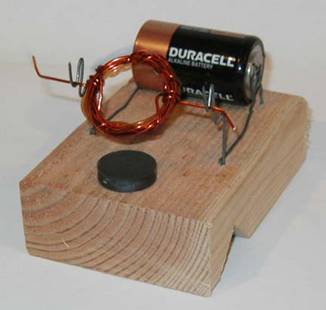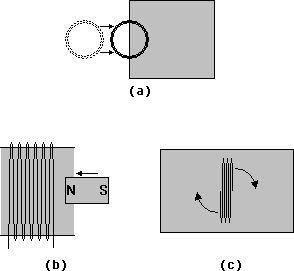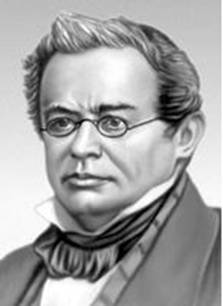
Figure 31-1: Iron fillings near a bar magnet
Image courtesy Boston University, http://www.bu.edu/core/cc105/lectures/L07-E&M/magfield.html
| NAME | DATE |
In ancient times it was observed that certain naturally occurring stones, known as lodestones, would attract one another and would also attract pieces of iron, although other metals, such as gold or silver, were unaffected. The word ‘magnetism’ arose from Magnesia, a region of Asia where lodestones were commonly found. Lodestones, as well as other materials exhibiting the behavior of lodestones, became known as magnets. In today’s world, magnets have numerous practical applications. To name only a few of these applications, magnets serve as important components of electric motors; magnetic recording tape; disks for storing information; and refrigerators.
Magnets are widely utilized in construction and operation of hovercraft. Magnets move the needles in many instruments in a hovercraft, and operate several controls. For example, magnets are essential components of the mechanisms that wipe a hovercraft’s windshield; open and close its electrical switches; operate its compasses; move counters in its hour meters; and charge its battery.
Every magnet has a north pole and a south pole. A magnet’s north and south poles are similar to the positive and negative charges in electrostatics: like charges repel and unlike charges attract, like poles repel and unlike poles attract each other. The magnetic field or lines of force outside the magnet extend from the north pole to the south pole. We know that magnets attract iron, so the magnetic field can be seen from the position of iron filings around a bar magnet as shown in Figure 31-1 below.

Figure 31-1: Iron fillings near a bar magnet
Image courtesy Boston University,
http://www.bu.edu/core/cc105/lectures/L07-E&M/magfield.html
The iron filings are attracted by the magnet through its magnetic field, which is often modeled as lines of force. Therefore, the iron filings at different positions are arranged along the direction of the magnetic field at that position. In Figure 31-1 above, we can see iron filings along the magnetic field. An magnetometer is an instrument used to show the direction of the magnetic field. Permanent magnets are a type of magnet in which the magnetism is a property of the object itself.
Magnets can also be created from electric current; these are known as electromagnets. In an electromagnet, a wire coil is wound around an iron core (bar of iron) and a current is sent through the coil. The strength of the magnetic field is determined by the magnitude of the current. The first electromagnet was produced in 1825 by the British electrician William Sturgeon.

Figure 31-2: An electromagnet
Image courtesy Georgia State University,
http://hyperphysics.phy-astr.gsu.edu/hbase/hph.html
Figure 31-2 illustrates an electromagnet. A current I passes through a wire coil that is wrapped around an iron core. The electromagnet created by the electric current behaves like a magnet as long as the current passes through the coil. The direction of the magnetic field can be determined by a simple rule, known as the Right Hand Rule. If you curl the fingers on your right hand in the direction of the current, then the direction of your extended thumb shows the direction of the magnetic field.
Electromagnets have numerous applications. One of the simplest and most ubiquitous of these is the electric motor. Many of the mechanical motions we see every day are created by alternating current (AC) or direct current (DC) electric motors. In an electric motor, the magnetic forces act to rotate a shaft.

Figure 31-3: Electric motor disconnected from battery
Image ©2000-2007, courtesy My Motor,
http://www.mymotor.org

Figure 31-4: Electric motor with battery connected
Image ©2000-2007, courtesy My Motor,
http://www.mymotor.org
In Figures 31-3 and 31-4, a magnetic force of attraction between a permanent magnet and an electromagnet may cause the motion of the copper wire loop. When a DC voltage is applied to the copper wire loop, it becomes an electromagnet and forms north and south poles at the two sides of the loop. If a permanent magnet is placed in the position shown in the figure, the electromagnet’s poles will be attracted and repelled by the poles of the permanent magnet When this occurs, the loop will start rotating due to the attractive and repulsive forces, and the coil’s rotational inertia of the coil will result in a continuous rotational motion. This is the basic principle by which all electric motors generate much of the mechanical movement in various motorized machines. Unlike DC motors, AC motors use an alternating AC current and the electromagnet is attracted by both poles of the permanent magnet in its rotation.
Some hovercraft, mostly small RC model hovercraft, use such electric motors to drive the lift and thrust fans and to move the rudders to change direction.

Figure 31-6: Electrically powered model hovercraft
Image courtesy Neoteric Hovercraft, Inc.,
http://www.neoterichovercraft.com
A looped wire through which current is flowing produces a magnetic field. Similarly, a change of magnetic flux through a closed loop wire produces a current in the wire. This was first discovered by Michael Faraday. Figure 31-7 illustrates several ways in which the magnetic flux through a loop can change. The shaded regions represent magnetic fields. If a conducting coil crosses over the edge of a magnetic field so that the area of the loop within the field changes, as seen in (a), the flux through the coil will change, generating a current. The same will happen if a magnet moves through the coil, as in (b), or if the coil rotates in place, as in (c).

Figure 31-7: Change in magnetic flux produces current in the loop.
Image ©2007 DiscoverHover
The rate of change in the magnetic field lines passing through a circuit loop induces an electromotive force (EMF), which produces current in the loop. As shown in Figure 31-7 above, when a magnet approaches a circuit loop, the number of magnetic lines of force through the coil will change, inducing an EMF. This produces current.
The induced emf (Є) in the circuit is equal to the negative of the rate at which the magnetic flux through the circuit is changing with time.
In mathematical form, Faraday’s law is
Є = −ΔΦB/Δt
Here, Є is the change in EMF or voltage, ΔΦ is the change in the magnetic field, and Δtis the change in time.
At this point, the direction of the induced current has not been specified. The rule to determine the direction of an induced current was developed by Heinrich Friedrich Lenz in 1834.
Heinrich Friedrich Lenz
1804 – 1865

Lenz’s Law:The induced current in a closed conducting loop appears in such a direction that it opposes the change that produces it.

Figure 31-8: Change of magnetic flux due to the bar magnet produces current in
the loops.
Image ©2007 DiscoverHover
In Figure 31-8 we can see a bar magnet’s North and South poles approaching and receding from a coil. The induced magnetic field Binduced is shown in the lower left for each case, while the magnetic lines of force are due to the bar magnet. In each of the four different cases above we observe that the magnetic field produced by the induced current is always opposite in direction to ΔB, which is the change in the magnetic flux. As Lenz’s Law states, a loop through which the magnetic flux is changing will produce electric current in a direction that will oppose the change. When the bar magnet moves toward the coil, it increases the total number of lines of force through the coil so that, according to Lenz’s Law, the induced current will flow in a direction that opposes this change.
Quiz Questions
| ©2005 World Hovercraft Organization All rights reserved. Copies of this Curriculum Guide may be printed for classroom use exclusively by DiscoverHover registered members. This Curriculum Guide and all materials contained in the DiscoverHover web site are protected by copyright laws and may not be reproduced, republished, distributed, or displayed on any other web site without the express prior written permission of the World Hovercraft Organization. |